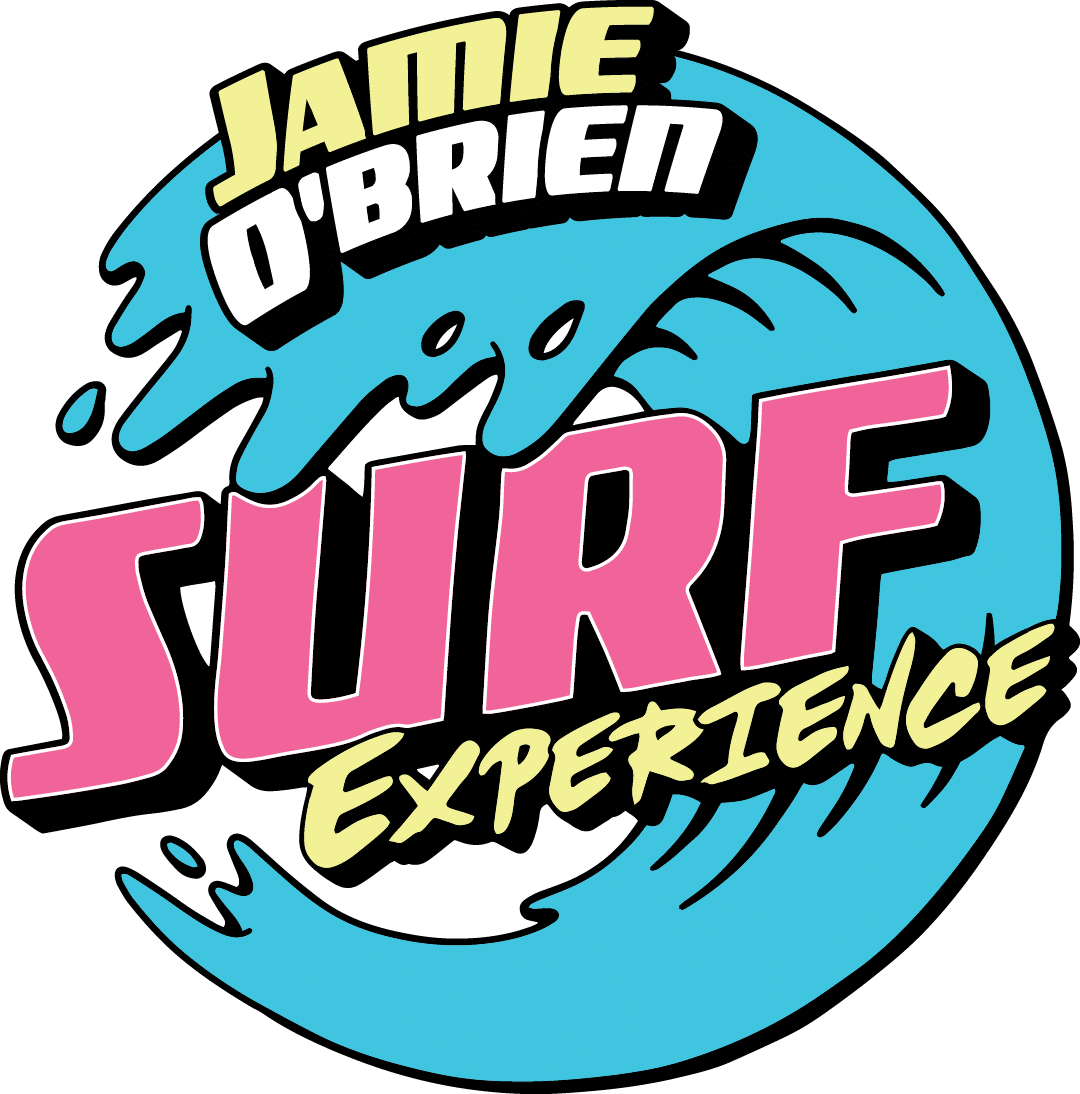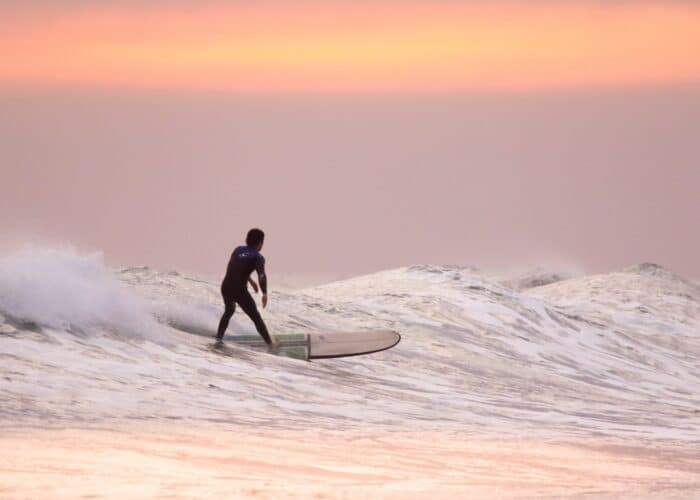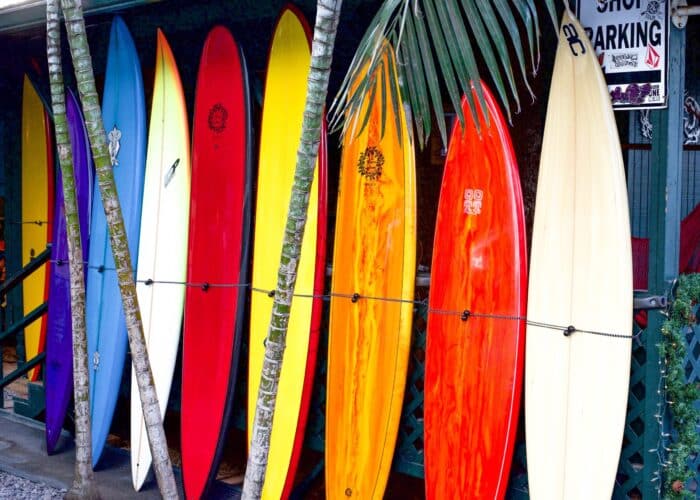The best surfers in the world have an uncanny ability to read waves and predict what the ocean is going to do at any given moment. If you watch a heat at a premier surf contest, like the Billabong Pipe Masters, you’ll notice the surfers scurrying around left and right chasing tiny bumps of swell that bend and contort into hollow, barreling waves when they hit the reef. You don’t have to be a professional surfer to learn to read waves. Understanding the anatomy of a wave and how waves move and break will help you increase your wave count and make the most out of each session. During our North Shore surf lessons, our instructors help our students read and pick waves. This post is designed to help you improve your wave selection without instruction. For Wave Reading 101: Our Oahu Surf School’s Guide to Wave Selection, continue reading below.
How waves break
When a wave breaks, one of four things happens: either the wave peels to the right, to the left, down the middle, or it closes out all at once. Being able to identify which direction a wave is going to break is instrumental to your progress as a surfer.
Rights
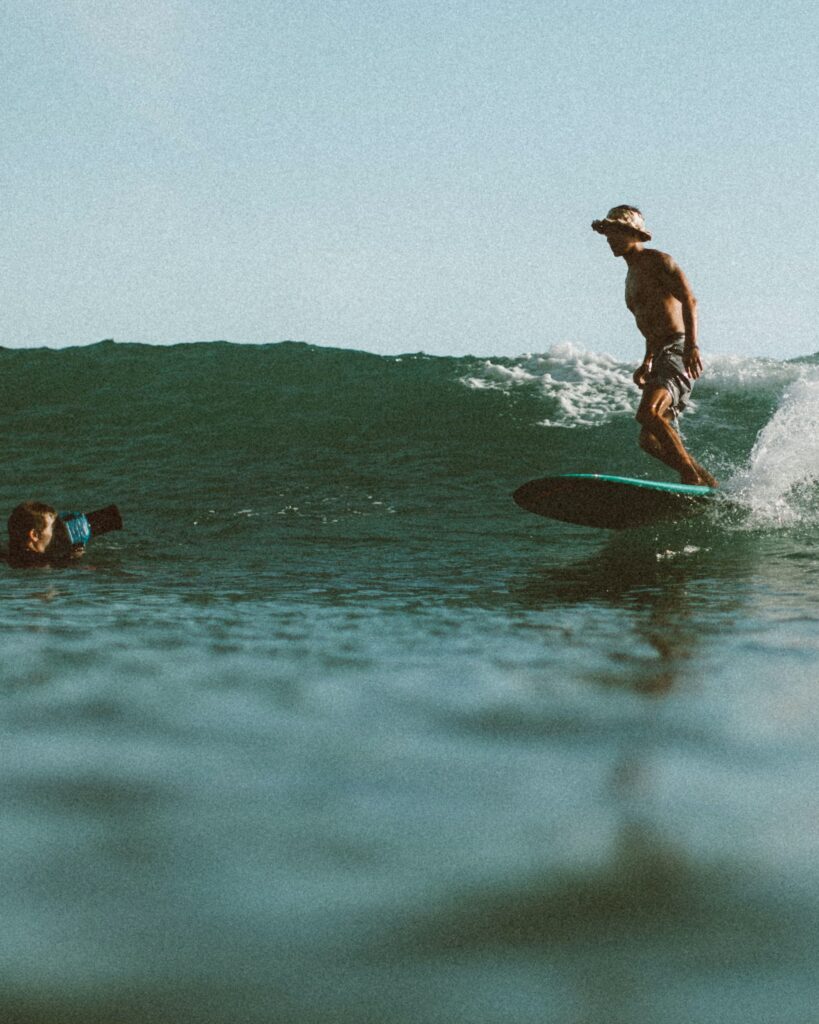
A right is a wave that breaks from left to right if you’re looking from the ocean to the beach. Regular footers (who ride with their left foot forward) typically prefer to ride rights because they ride facing the wave.
Lefts
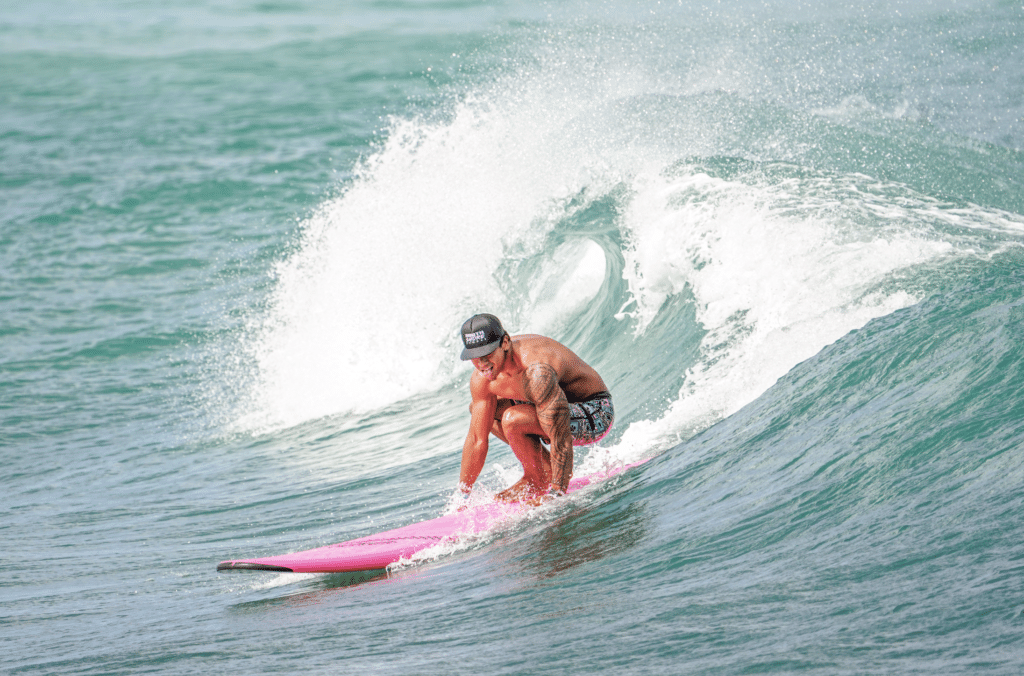
A left breaks from right to left. Goofy footers (who ride with their right foot forward) prefer lefts so that they can face the wave.
A-frames
A-frame breaks right down the middle, producing both a right and a left. A-frames can be split by two surfers so that one surfer goes right and the other left without violating any rules of surf etiquette.
Close-outs
A close-out breaks all at once with no potential for a ride in either direction. Close-outs are avoided by those who can spot them. The better you are at reading waves, the easier it will be to avoid close-outs.
The anatomy of a wave
Understanding the anatomy of a wave will help you catch and ride waves more efficiently. Every wave breaks differently, but structurally, they are all relatively similar. If you understand the anatomy of a wave, you know where on the wave to drop in, where to find speed, and where you should begin to set up turns.
The peak
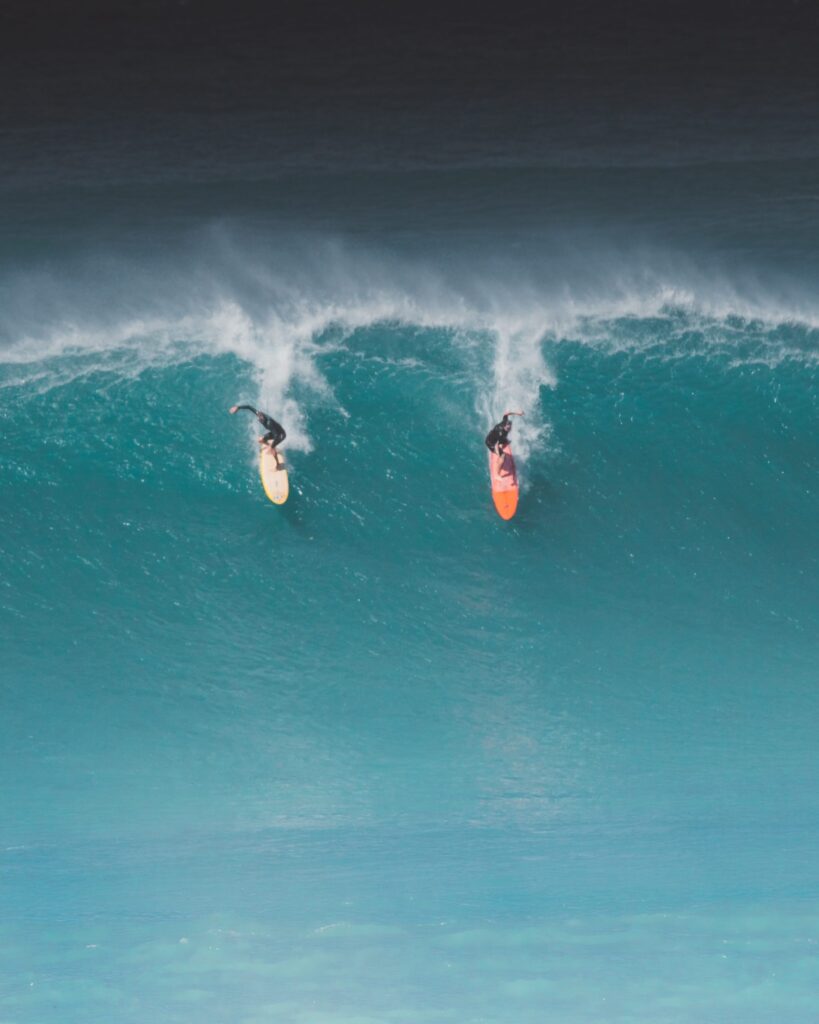
The peak of the wave is the highest point on an incoming unbroken wave where the wave first begins to break. The peak is also the steepest part of an unbroken wave, so it is the easiest place to catch the wave. Surfers try to catch waves right at the peak or just to the right or the left of the peak, depending on which direction they plan to ride.
The shoulder
The shoulder of the wave is the less steep unbroken part of the wave. Unless you’re riding a longboard, it’s difficult to get into a wave at the shoulder.
The lip
The lip is the cresting portion of the wave that crashes forward. The lip first begins to break at the peak and peels the direction of the wave.
The pocket
The pocket is the steepest part of the rideable face of the wave. It’s located just in front of where the wave is breaking.
White water
After the wave breaks, it turns to foamy white water that travels towards the shore. The white water forms in the direction the wave is breaking and moves towards the beach. When you first learn to surf, you typically learn in white water because it’s not as powerful as a breaking wave.
The flats
The flats refers to the flat area in front of the breaking wave. If you ride too far in front of a wave (instead of down the line), you’ll lose your momentum as you hit the flats.
The barrel
Occasionally, given the right swell and wind conditions, waves become so hollow that the lip falls far enough forward on the wave for the pocket to be completely covered behind the breaking wave with the surfer riding inside the wave. For surfers, getting barreled surpasses anything else you can do in the water.
How to read waves
- Identify the peak
As mentioned above, the peak is the highest point of an incoming, unbroken wave. So, the first step to reading and catching a wave is to identify the peak and paddle towards it.
- Pick a direction
If the incoming wave looks as if it is higher on the right (looking towards the beach) then it is a right. If the swell seems to be higher on the left, then you guessed it, it’s a left. If the wave’s shape seems to peak and drop off on both sides, that wave is an a-frame, and you can take off either direction.
- Paddle padle paddle
Once you identify the direction the wave is breaking and paddle to the peak, turn and paddle and catch the wave. If the wave is breaking quickly it may help to angle yourself slightly to the direction the wave is breaking.
At Jamie O’Brien Surf Experiences, we want you to have as much fun as possible in the water while still progressing as a surfer. We’ve compiled helpful tips from the surf instructors at our Oahu surf school to bring you the best surf tips and tutorials out there. If you’re planning a trip to the North Shore, make sure you book your Oahu surf lesson with JOB Surf Experience. Book your stay on the North Shore at Turtle Bay Resort to be close to the best surf in Oahu. Stay tuned to our blog for more surf tips, guides, and tutorials.
